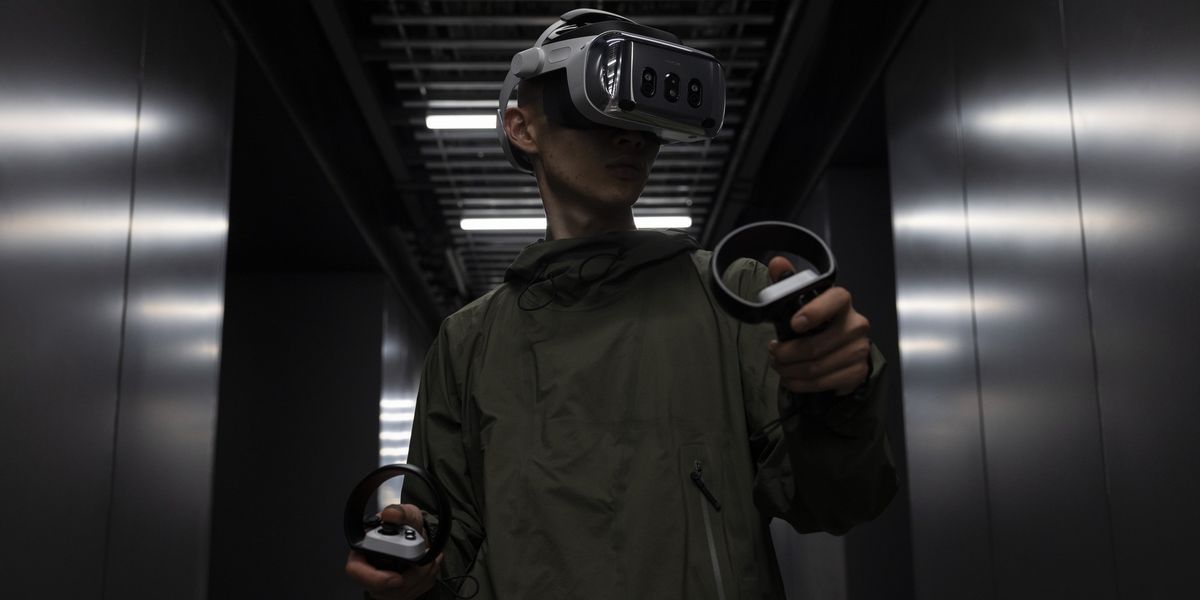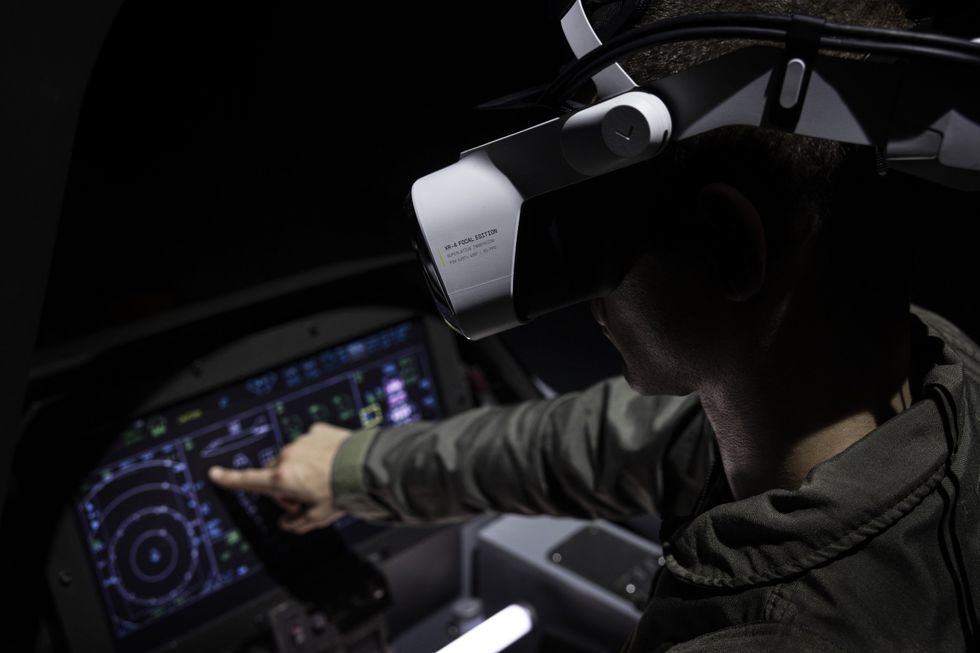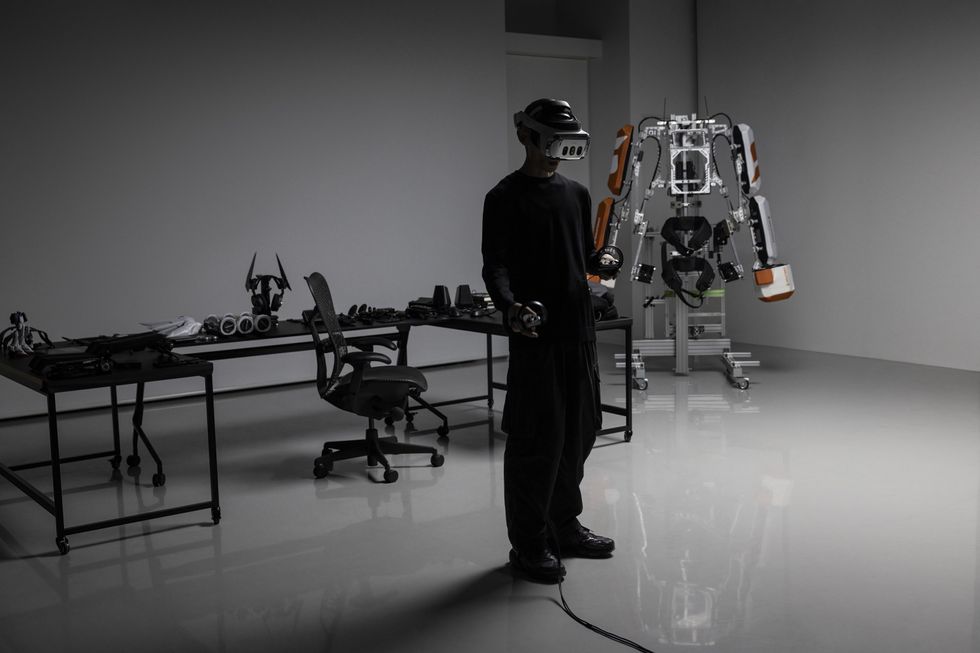
The Meta Quest 3 is a capable, accessible mixed reality device. But if you’re a mad scientist working on a secret project in an underground lab, it’s not going to cut it.
Finnish headset manufacturer Varjo has a solution: the XR-4, a new generation of flagship mixed-reality headsets built for unusually demanding users. Varjo, based in Helsinki, serves up displays with record-setting pixel counts, auto-focusing cameras, and a “Secure Edition” that looks like it was ripped straight from a Bond film. The goal? A photo-real mixed-reality experience that lets designers, researchers, and creatives build and work with objects that don’t yet physically exist.
“How do you design a car without a clay prototype? How do you sell a yacht you haven’t built yet? How do you train a pilot to fly a plane that’s still on the ground?” says Patrick Wyatt, Varjo’s chief product officer. “Jobs you do right now with physical things, we’re virtualizing those.”
Even More Pixels Than Apple Vision Pro
Varjo’s XR-4 headset comes in three different editions, each with escalating features (and price tags). The “entry-level” XR-4, which starts at €3,990 (about US $4,300), homes in on product design and data visualization work that requires crisp virtual reality alongside occasional use of mixed reality.
Varjo achieves this with dual 4K displays that leapfrog even the resolution of Apple’s upcoming Vision Pro headset. The XR-4 packs 28 million pixels, five million more than the Vision Pro. The field of view (FOV) is also improved, spanning 120 degrees horizontally and 105 degrees vertically. It’s a big leap from the XR-3’s vertical FOV of just 80 degrees (and likely wider than the Vision Pro, though the Apple headset’s FOV remains a secret).
“The vertical stuff is often overlooked. A lot of focus is on the horizontal field of view, but the vertical creates that sense of immersion, that you’re not looking into a letterbox,” says Wyatt. The increased FoV is important in flight simulators, where trainees need to keep an eye on gauges while manipulating a yoke or peering outside a cockpit.

Varjo’s auto-focus cameras boost the clarity of mixed reality, which is useful for full-scale physical simulators. Varjo
Simulators might also benefit from the XR-4’s more expensive sibling: the XR-4 Focal Edition. Priced at €9,990 (about $11,000), it justifies its cost with dual gaze-directed auto-focus cameras.
The cameras aren’t meant to capture better photographs or live-stream video compared to the standard XR-4. Instead, the cameras capture the world around the headset with more clarity than fixed-focus cameras. The standard XR-4 delivers a mixed reality resolution of 35 pixels-per-degree, which already exceeds most headsets, but the Focal Edition boosts that to 51 pixels-per-degree (the maximum its display can support).
Think of it like trying to watch an old TV show on a modern 4K television. The TV’s high resolution is irrelevant if the show you want to watch was broadcast at a 480i standard definition. Pass-through mixed reality faces a similar issue. A high-resolution headset display is wasted if the cameras fail to capture a clear, crisp, low-latency image of the real world—a problem that held back the Meta Quest Pro at release.
“This has come out of working with customers in the training simulation industry,” says Wyatt. “They want to be in a realistic cockpit, and they want to look at real dials and controls, and see the virtual world around them, almost at the periphery. What they really care about is focusing on the real world.”
The Perfect Headset For a Mad Scientist’s Lab
While some simulators rely on Varjo headsets to train civilian pilots, they’re also used by more secretive clients like Lockheed Martin, BAE Systems, and the U.S. Army. That’s where the most unusual—and expensive—XR-4 model comes into play: the Secure Edition.
The Secure Edition is available with fixed-focused or auto-focus cameras and priced at €7,990 and €13,990 ($8,700 and $15,200), respectively. The headsets (assembled in Finland) satisfy the United States Trade Agreement Act (TAA), a standard meant to thwart spies who might tamper with a device while it’s being manufactured. The Secure Edition can function completely offline and, for the most secretive skunk works, can be ordered with all radio components removed.
The XR-4’s ability to function free of the Internet, or other wireless hardware, underscores a key difference between it and other mixed reality headsets. The Apple Vision Pro, Meta Quest 3, and Meta Quest Pro are designed like smartphones. All necessary hardware is contained within the headset but, paradoxically, the headset is effectively a brick without an Internet connection.

The XR-4 Secure Edition can be ordered with all radio hardware removed for maximum security.Varjo
The XR-4 is more like a computer accessory. All computation and rendering, aside from some sensor data, is handled by a connected PC. An Internet connection can be used (or not), software is installed directly instead of through an app store, and the PC’s hardware can be changed and managed part-by-part as required.
It’s a complex, old-fashioned approach that’s fallen out of favor with Meta and Apple, but one that Varjo’s users require. Many of the tasks the XR-4 is built to accomplish, from designing a product with CAD software to training jet pilots, require tons of fast, locally available compute power.
“When you buy an all-in-one headset, you’re stuck at that level of capacity,” says Wyatt. He points out the Apple Vision Pro’s Apple M2 processor, though impressive, has a GPU rated at just 3.6 teraflops. “Top-end Nvidia GPUs can exceed 80 teraflops, right? For those applications where you’re running 30 million polygons, with ray tracing, the gap is huge between what you might be able to run on your head, and what you might run on a connected PC.”
Source: IEEE Spectrum Computing
